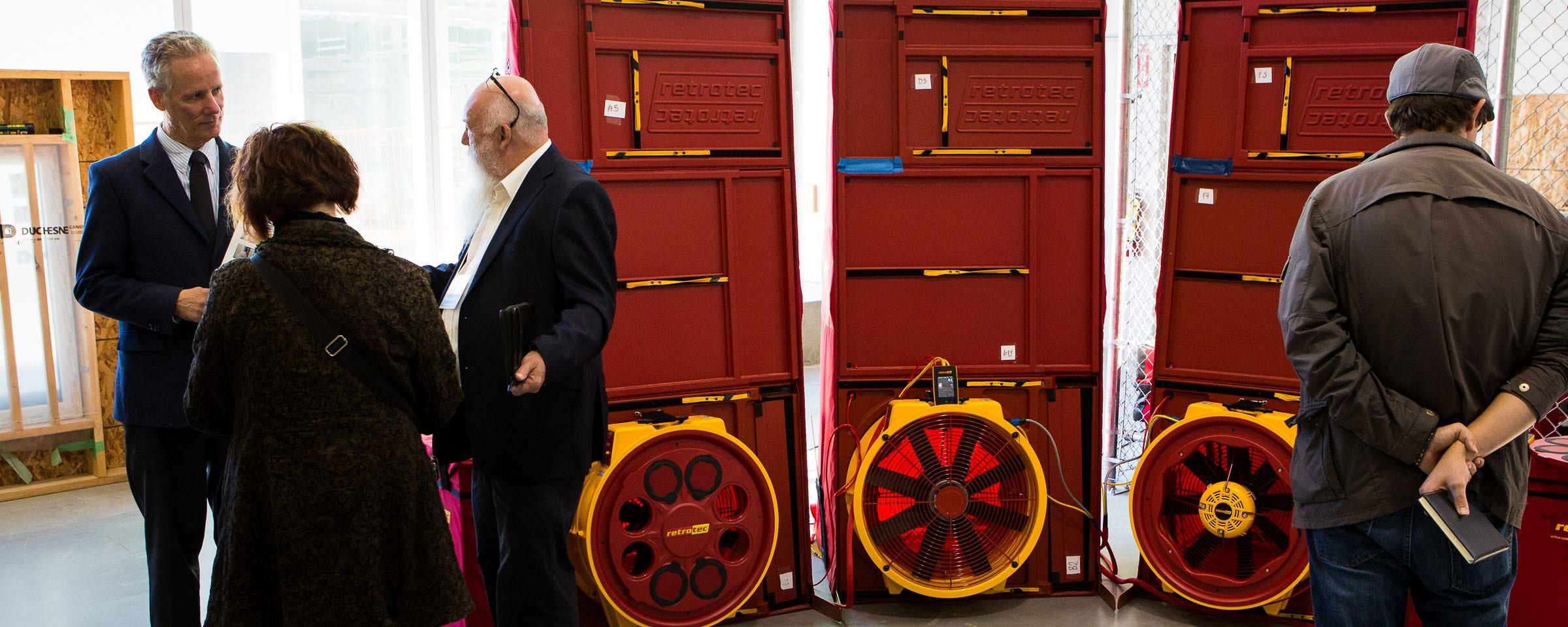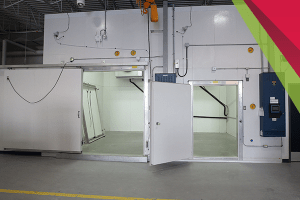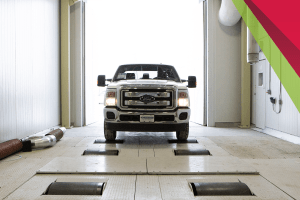



Located at the Centre for Applied Research in Sustainable Infrastructure (CARSI) at Red River College Polytechnic’s Notre Dame Campus, the primary lab facility for the Building Efficiency Technology Access Centre (BETAC), where two environmental chambers are used to evaluate thermal performance of different building components, including doors, windows, and mock-up wall systems.
The medium-scale chambers have:

Located at Red River College Polytechnic’s Notre Dame Campus, the large-scale environmental chamber (MotiveLab™) primarily serves the regions’ heavy vehicle industry, but is also available for some special projects of BETAC upon request.
The large-scale chamber features:
Different types of project applications can be developed in the environmental chambers.
This project explored the use of advanced thermal insulation in a spandrel panel with a limited thickness for insulating space. A mock-up of the panel was tested to evaluate the effect of advanced insulation material on the thermal performance of spandrel panels and limited spaces. An aerogel thermal blanket with an RSI of 5.08 (R-8.75 per inch) was used. The testing provided a valuable set of experimental data that may be used to validate current and future projects.
Another project involved a window-to-wall mock-up, which was constructed and placed in the common wall of the environmental chamber. Thermocouples were placed within numerous areas of the test specimen which was subjected to a winter design temperature on one side and a typical residential condition (temperature and relative humidity) on the other. Measurements were made after a thermal steady state was reached, including observations for condensation formation.
A calibrated insulation material with a known thermal performance was placed in the chamber and subjected to various temperature differentials. Higher temperature differentials as experienced in Manitoba’s winters between the indoor and outdoor environment were included in the testing. Heat flux sensors were used to measure the difference in thermal performance of the insulation materials under various temperature differentials.
SEE ALL TECHNOLOGY AND FACILITIES